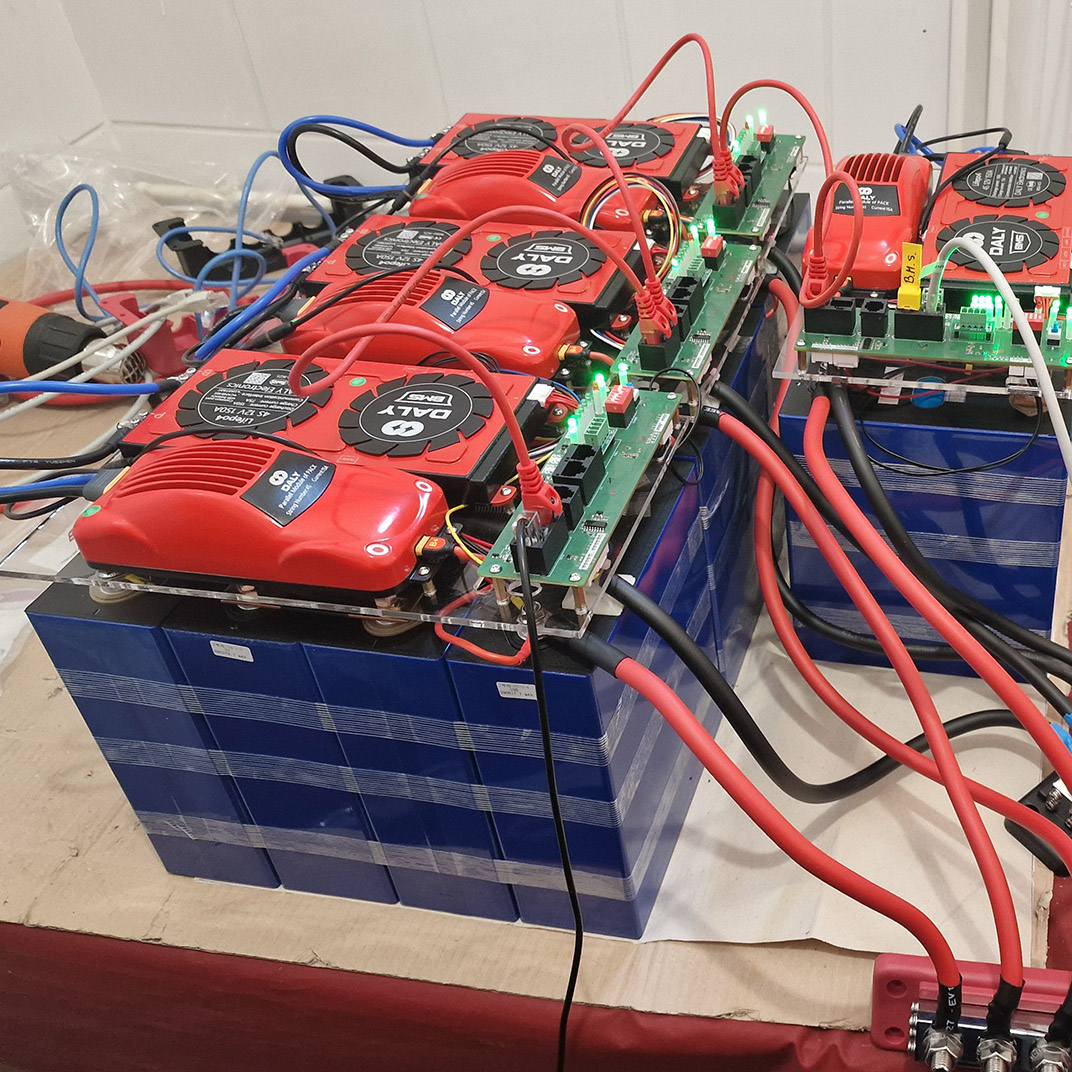The previous owner was not satisfied with the boat's power capacity when shore power was not available, so they added another two 190Ah batteries to the existing pair. They retained the original Dolphin onboard charger, which is 80A with three outputs distributing the 80A. Upon examining the situation, the service batteries were never fully charged, with their voltage never exceeding 12.9V. The 20-year-old Dolphin charger had a 30A fuse on each output, so the 4x190Ah service batteries could only receive a maximum of 30A charging, instead of the necessary 76A.
Our proposal was as follows.
We replaced the original two 190Ah batteries with four batteries, each consisting of four EVE 280Ah LiFePO4 cells, totaling 16 cells. This provided 1120Ah, 14.33kWh capacity. Each battery received a Daly BMS (Battery Management System), a parallel module (to connect the batteries in parallel), and a communication module. This module communicates with other batteries via RS485 and with the Victron system via CAN-bus.
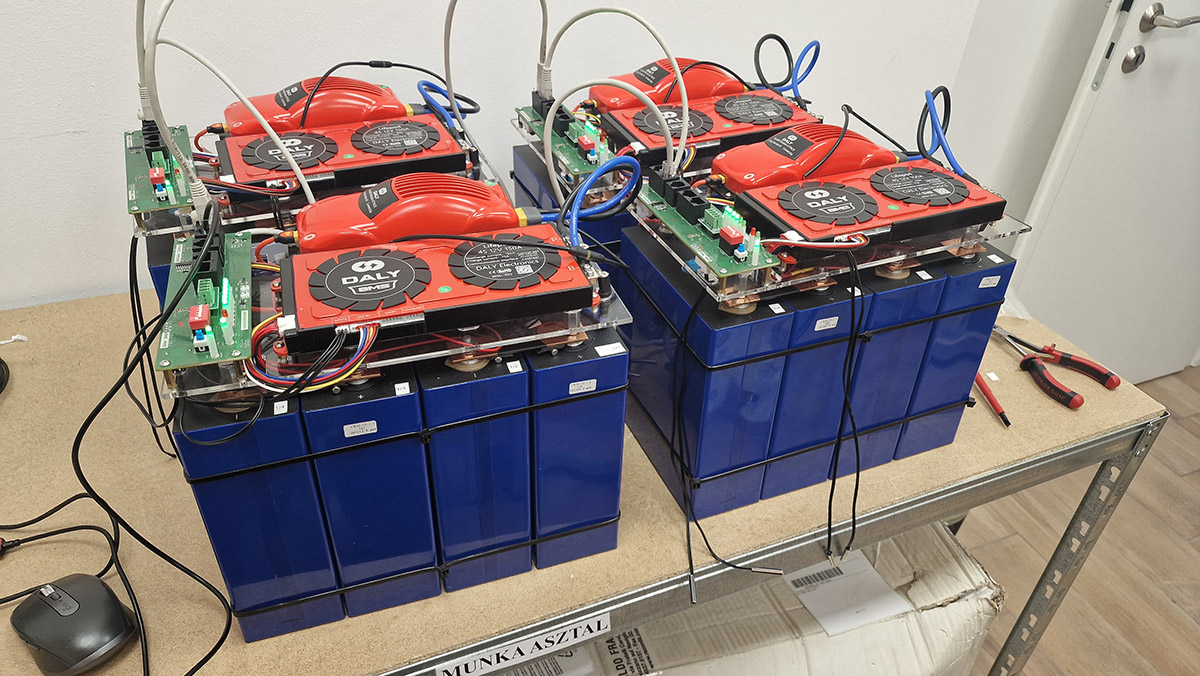

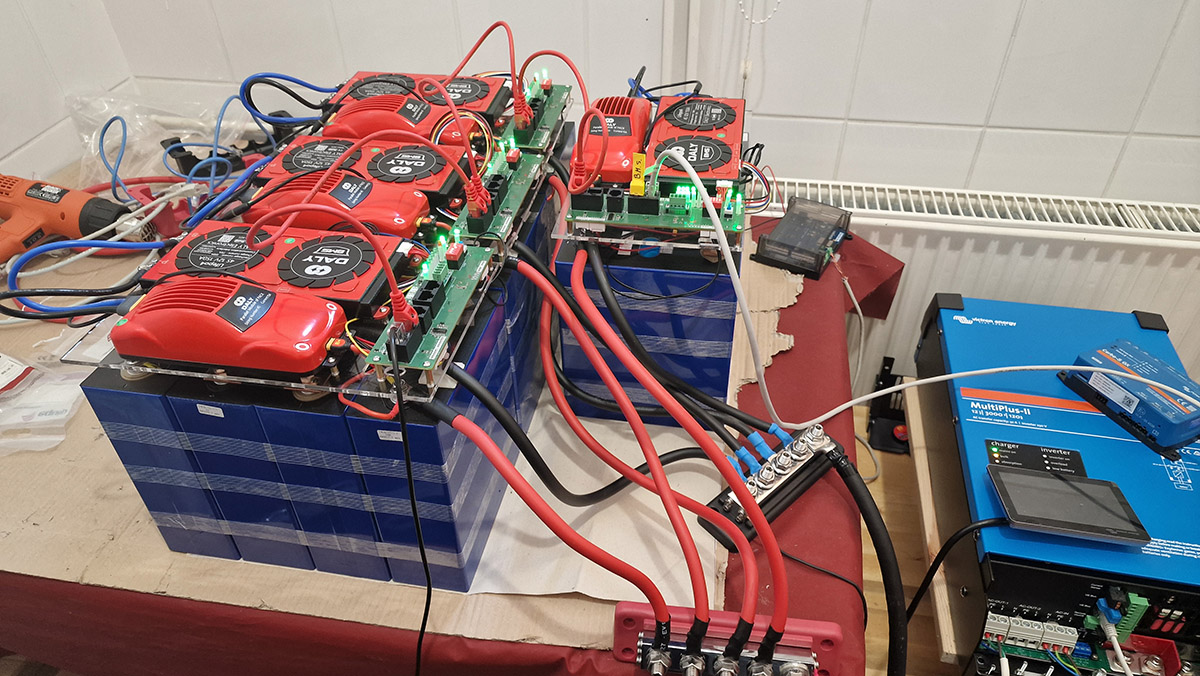

We retained the two additional 190Ah batteries, organized them into a separate group, and connected the anchor winch, bow, and stern thrusters to them. These batteries, along with the generator and starter batteries, are charged with the original Dolphin charger, but plans are in place to replace it with two Victron chargers. We removed the old Voltmaster inverter and replaced it with a Victron Multiplus II 12/3000/120 charger/inverter. This is a combination of a 230V, 3000VA inverter and a 120A charger operating on 12V. Given that the LiFePO4 batteries, in this case, the 1120Ah, can be charged at up to 1120A, we installed an additional 100A charger for faster charging when needed.
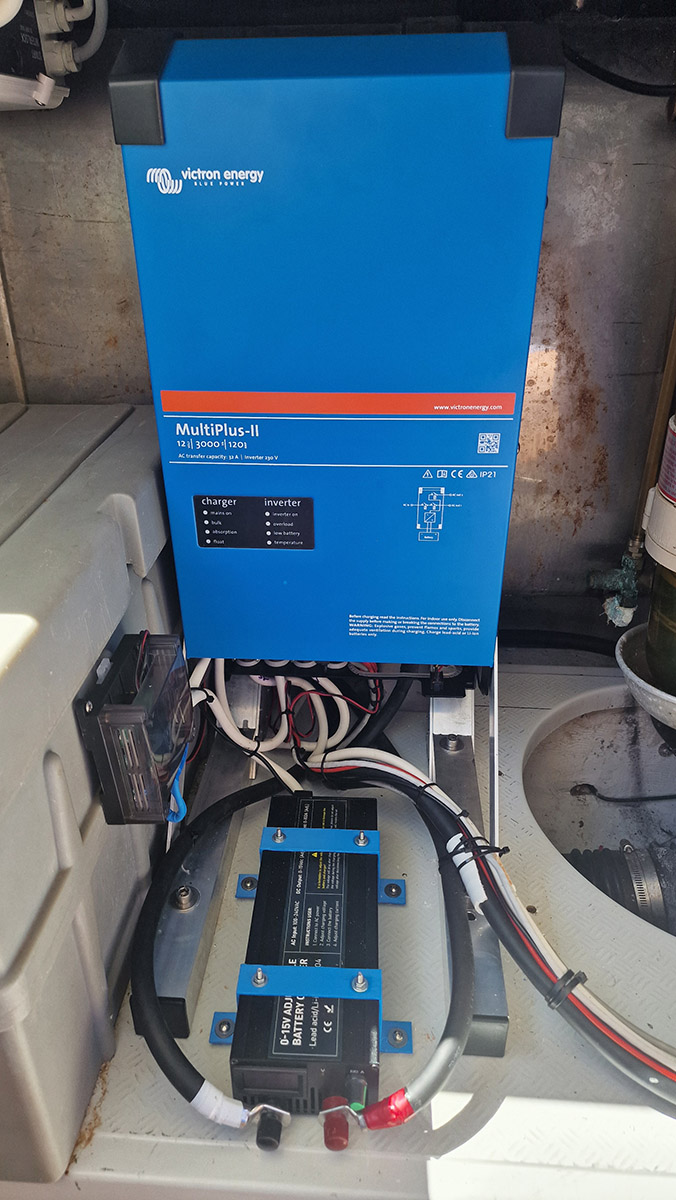
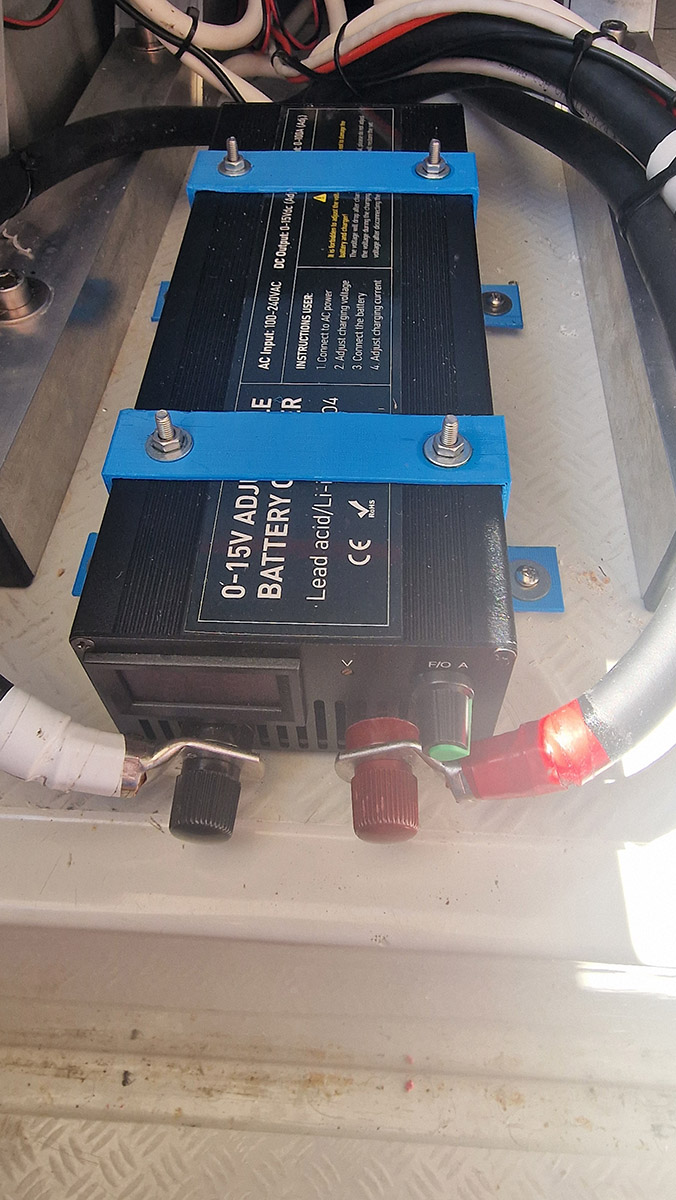
This auxiliary charger is equipped with smart control and thermal protection, which shuts down the charger at 55°C for safety reasons.


Since LiFePO4 batteries cannot be charged directly from the engine alternators, it was necessary to install a DC-DC charger. The boat's engines have relatively small 55A alternators, and we chose the Renogy 40A charger. This charger can provide 40A charging but also has a limited mode for 20A charging. We developed a smart control for this, which also monitors the charger temperature. The boat previously had an as-smart engine digitizer installed (currently in testing), which digitizes engine data (temperature, oil pressure, RPM, etc.). This allowed us to link charging from the engine alternators to engine RPM: at 800 RPM, both alternators start charging at 20A, and at 1200 RPM, they charge at 40A. The chargers automatically shut down if they overheat, and if the starter/generator/anchor winch batteries are low, we limit the Renogy charger current from this circuit to 20A or shut it off if necessary.

The boat's bimini top is equipped with four 104W flexible solar panels (with plans to expand the bimini to fit two more 104W panels), served by a Victron MPPT 150/45 solar charger.

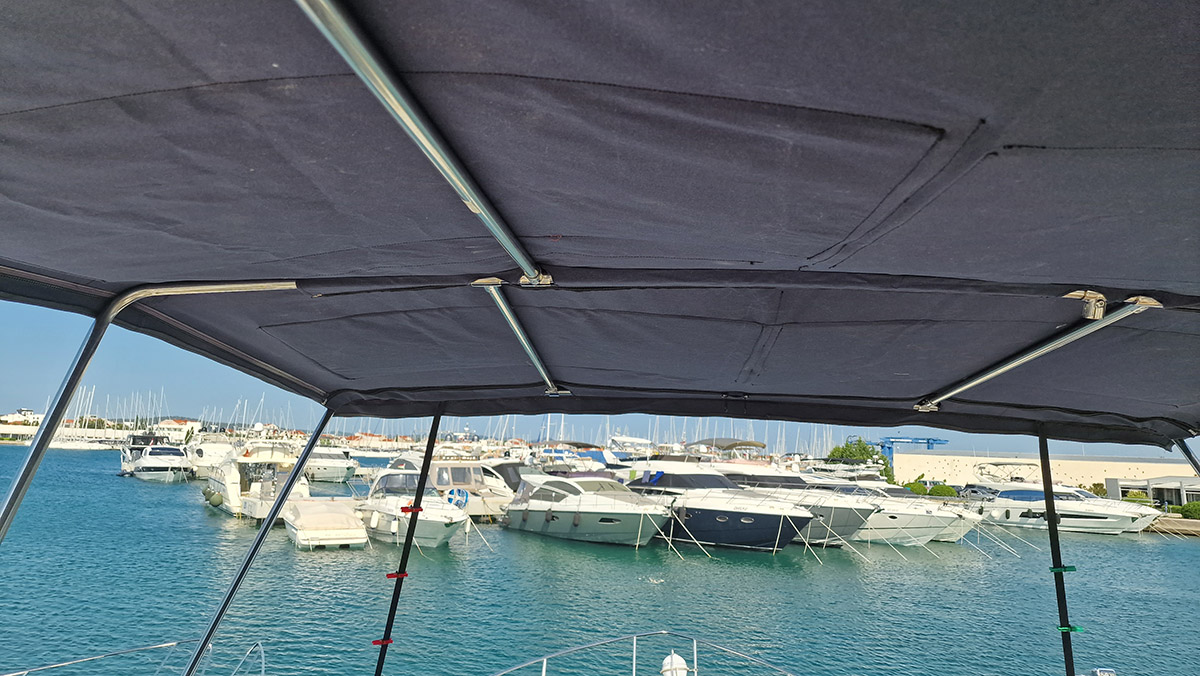
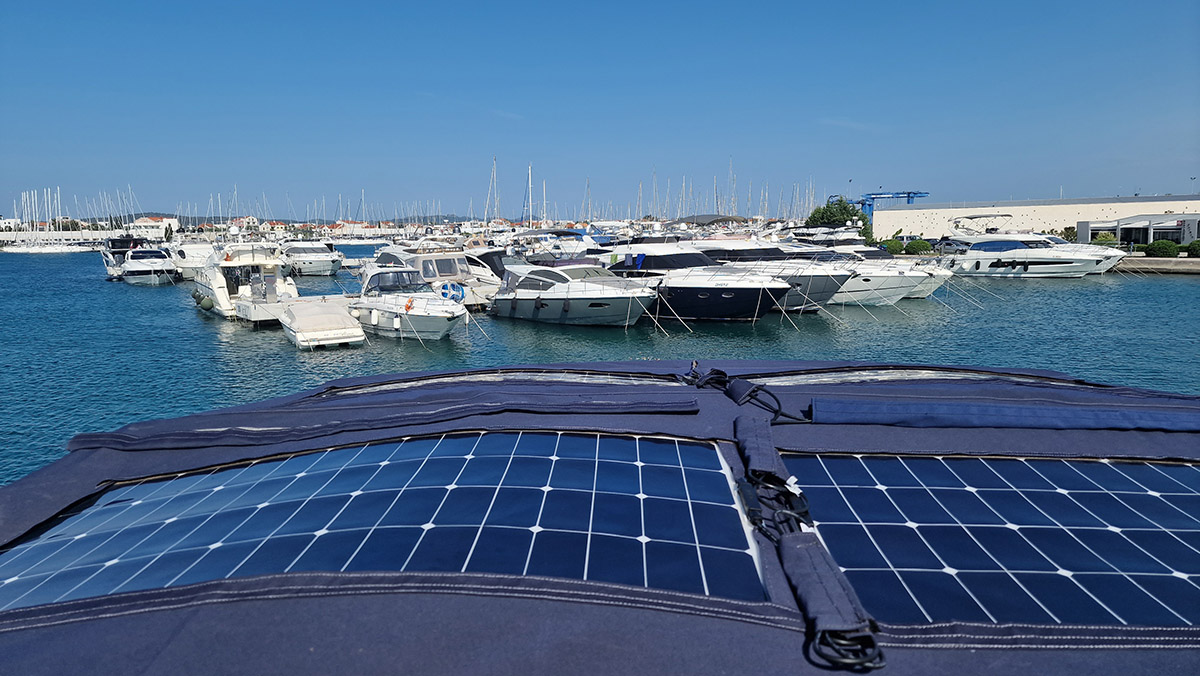
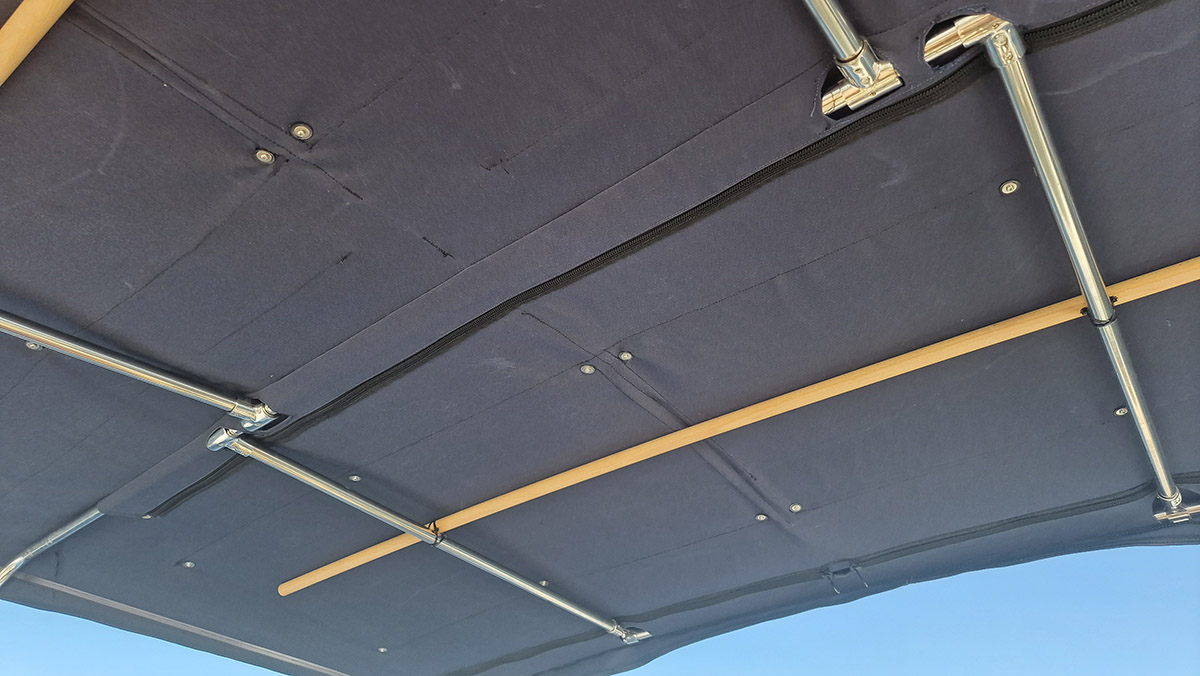
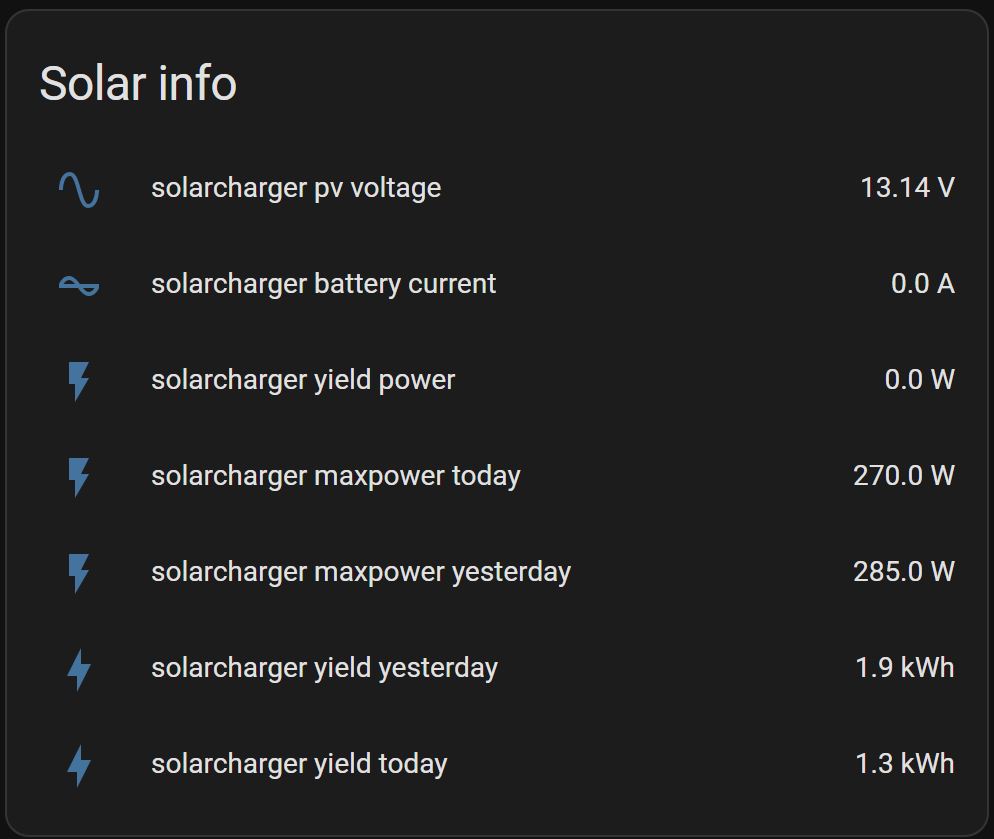
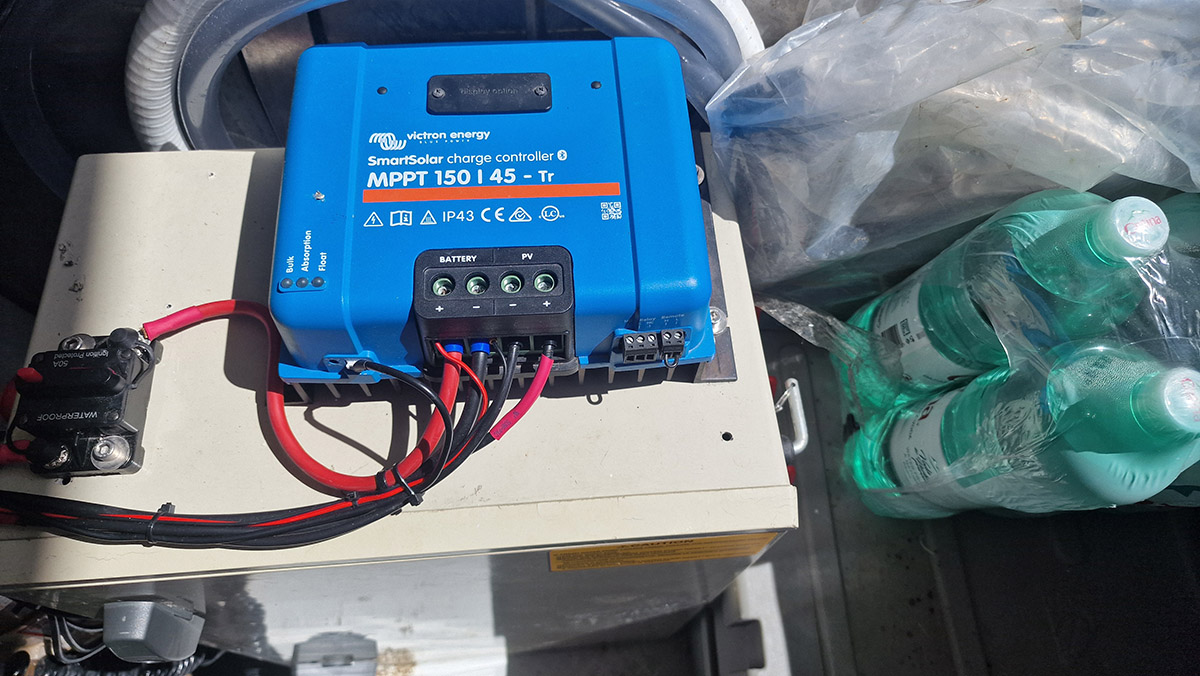
With these 416W solar panels, on sunny days, 2-2.1 kWh production is expected, typically providing 20-22A charging current. This configuration nearly achieves self-sufficiency but not quite. With half to one hour of generator charging daily (necessary for hot water and cooking), the boat becomes self-sufficient. Thus, the additional 100A charger is needed to quickly recharge the used power while at anchor.
Overall, while sailing, we can charge the batteries at up to 80A, with the solar panels providing 20-22A, and when charging from the generator or shore power, we can charge the service batteries at 200-220A, meaning a 20% increase in charge per hour, or about 5 hours to go from 0 to 100%.
We placed great emphasis on safety. The BMS units shut down in cases of overcharge, short circuit, overload, or overheating. The auxiliary charger also has configurable thermal protection, as do the DC-DC chargers.

The Victron system, as a second level, also measures the battery system temperature and can alert and intervene if necessary. On this 2004-built boat, we installed an as-smart generator controller capable of starting and stopping the old-type generators. This is significant because, in critically low voltage or service battery charge levels, it can automatically start the generator to charge the batteries.
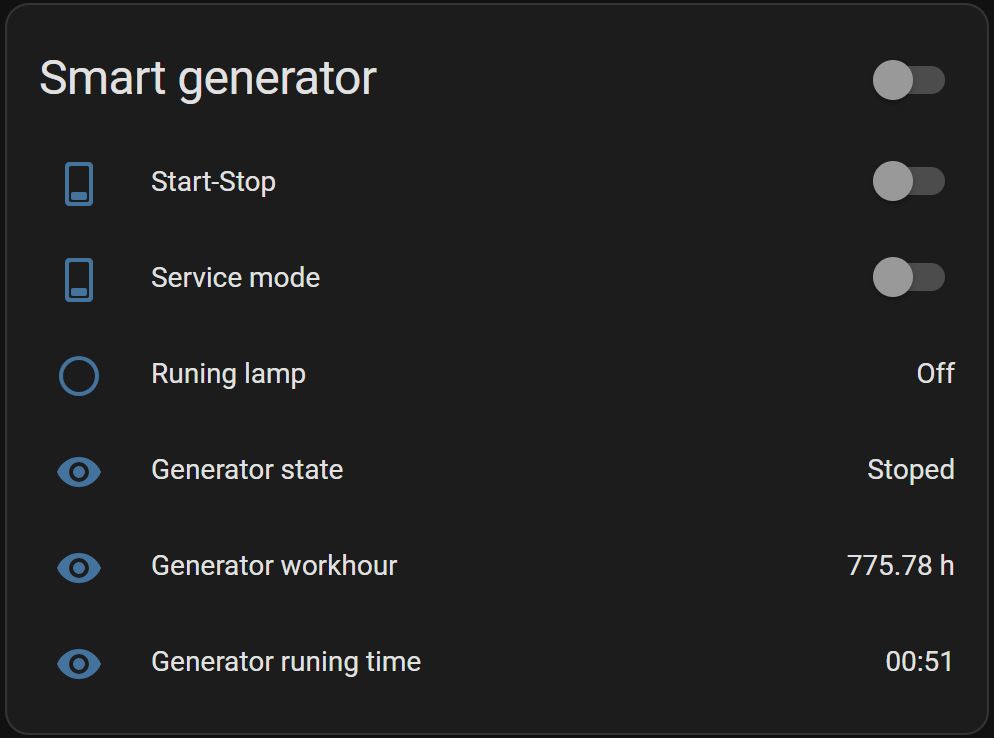
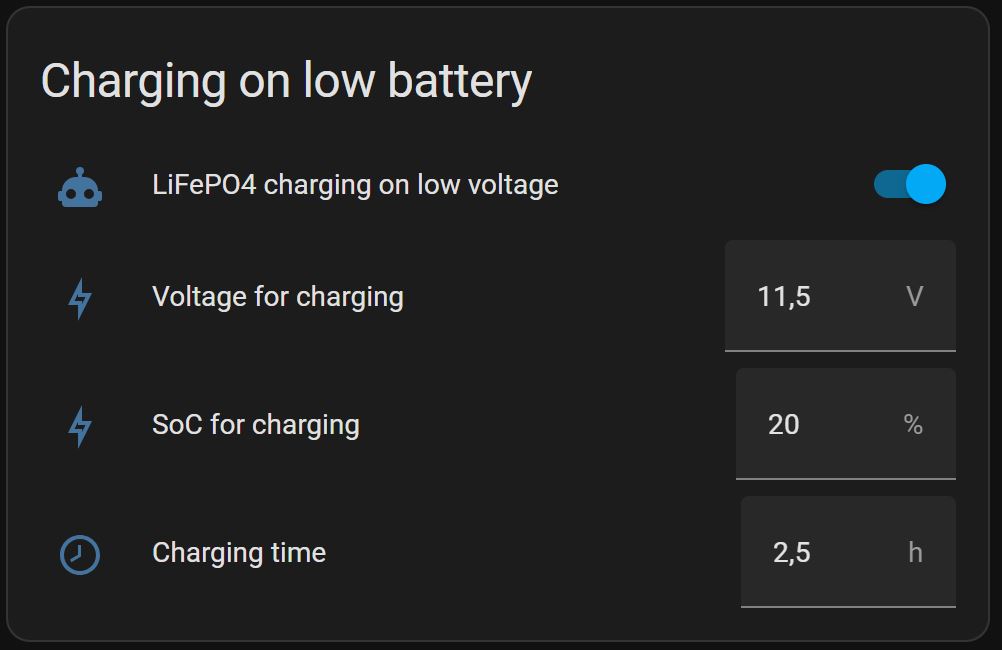
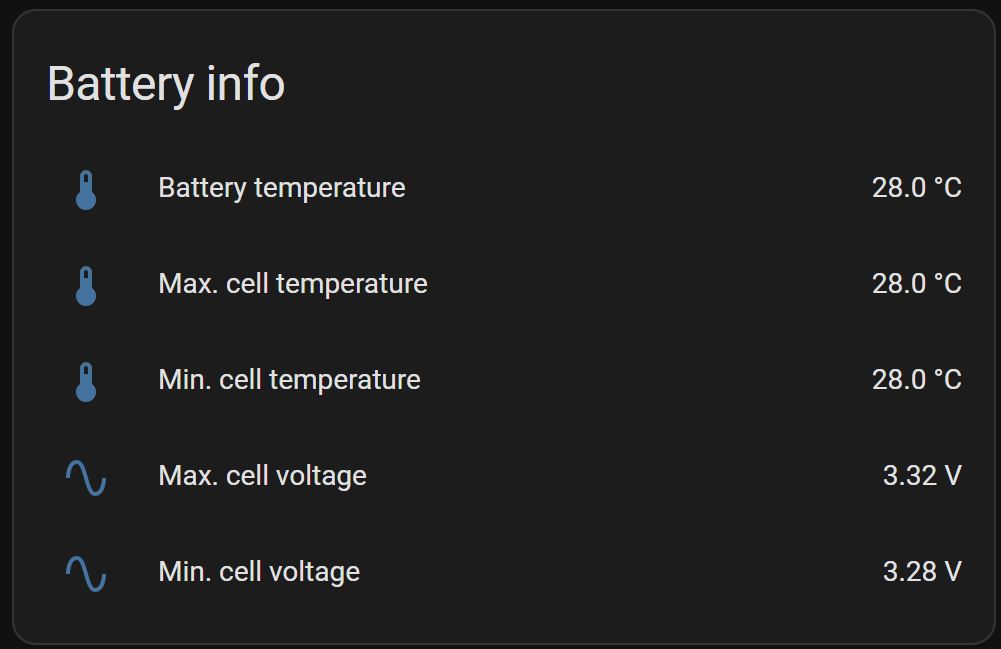
Moreover, the boat's guests can easily use the boat: for example, for cooking or hot water preparation, a virtual switch turns on the appropriate high-power consumer, and the as-smart system decides the suitable power source (shore power, inverter, or diesel generator) based on availability and the service battery charge level.






